Well, used portrait photography props can help you achieve many things: Using photography props well can turn a simple portrait into a compelling story.
What Photography Props Should You Use?
Props are anything at all used to better support and add meaning to the main subject in a photo. With portrait photography a prop will enhance the subject. And it’ll give the viewer a better idea of who they are. Portrait props can add elements of fiction to conceptual photography ideas. This is the case in my portraits of the ceramic artist and her clay.
Ask Your Model to Bring Their Own Props
She had brought along the clay as her idea was to show herself as one with her artwork medium. We started with only a little mud on her face and built it up after every twenty or so photos. I chose dramatic lighting and posed her somewhat the same as I would a fashion model. Ask your subjects ahead of a planned photo session if they have any props they would like to include. Many times you will not have thought about including the props they suggest. The results can be terrific. This is because your subject will be more involved in the portrait concept.
Collect Second Hand Props or Make DIY Ones
Portrait photography studios are usually full of props. They may be homemade DIY props or bought second hand at yard sales or thrift stores. Having a vast selection of props to choose from will give you more scope for creative expression. Keep your props well organised and clean. You want to be able to find them when you have that bright idea to use one. Handing a model a dirty or dusty photo prop is not good. In this photo both the glasses and book were purchased to use as props.
Use Everyday Objects As Props
Whatever you have on hand works. A camera, book, handbag, or a mobile phone. You may be surprised at how effective it is to ask a nervous model to make a phone call. Or to take a photo as you are photographing them. Getting them to concentrate on a prop, whatever it is, will draw their attention away from you.
Finding Props on Location
If you are out and about for your portrait session look around for photography props. At the markets where I love to photograph people there’s plenty of great props. This is one of many photos I made of this young woman with chillies. She had chosen her dress especially for her portraits. Props you find in the environment add spontaneity. But I do find thinking ahead and planning to have some props with you is a good habit.
How to Use Photography Props When Making Portraits
Having a healthy imagination will enable you to come up with the best photo shoot ideas. You can cultivate your ideas by looking at how other photographers use props in their portraits. Study the masters and come up with your own ideas, or try theirs. Experiment a lot. Don’t use a prop the first way you think of or the most natural way. You can start with what’s conventional. This will be more comfortable for your model. Then have your model do different things with the same prop. Think alternatively, even contrarily, and you will come up with some unique portraits.
Use Portrait Props to Add Location Information
Environmental portraiture is often best when you use only one or two props. Props will support the visual story and provide more information about the location. They can also enhance the image by showing more of the person’s character. A particular style of hat. A crafts person’s tools. A stack of books. Anything that is relevant to the person, their location and how you want to portray them. Even when a person is out of context with their environment, a well-used prop will tell their story. I enjoy photographing people in my outdoor daylight studio in mountain villages. They become removed from their environment. Introducing a prop creates a connection to whom and where they are, yet they remain isolated.
Create a Concept by Using Photography Props
Concept photography can be challenging for many. Coming up with good ideas is often a lot more effective and easier when you use props. The props you choose and how your model interacts with them has impact on the concept. Even variations in your model’s expression and posture will alter the story. You can see this in the two photos below. Adding different props can produce completely different concepts. Even when working with the same model, in the same location and with the same lighting. Someone who is very expressive and enjoys being photographed is a huge advantage.
Props Can Provide Occupation Information
Getting your subject to hold a tool or other object they work with conveys information about what they do. A man holding a hammer would be perceived as a carpenter. A woman pictured with test tubes, flasks and holding a beaker of liquid will most likely be a scientist or chemist. Some props are not so informative. Computers, clip boards, or books and other items which are too generic will not be so effective. You want your prop to convey specific information about the person’s occupation. Or at least to hint at it. This woman sells steamed mackerel at the local market. In this location most backgrounds are uninteresting or too distracting. Having her stand in the opening of her workspace with a tray of fish tells a story. Without the fish she would be a happy woman with an awesome smile. Including will hold the viewer’s attention longer and get them thinking. Why is she holding this tray of fish? What does she do? Where is she?
Help Your Subject Relax by Including Props
Portrait photography props can be a considerable aid in getting a nervous or uncomfortable model to loosen up. With children they can provide the best distraction. And allow you to make the most natural, un-posed portraits. Without a prop your subject is likely concentrating on you and your camera. Their thoughts are focused on how they look. Introducing a prop into the portrait session will give them something else to focus on. Simple things like asking them to make a phone call, read aloud from a book or blow some bubbles will transform a static subject. You will need to take more photos to capture the best expression, but is it well worth it. When people are focused on the prop, their facial expression will be more natural. It will not always look the best. If they are speaking on the phone or reading, you will need to choose a frame that is flattering.
Props Can Add Ambience to a Portrait
Creating feeling in a portrait with a person who is a little camera shy is always challenging. Adding the right prop into the mix will help you build feeling. You can do this in many ways, depending on the mood you want to set. Giving a woman flowers to hold will almost always lighten the mood. A cup of coffee can have a similar effect. Even if the prop is unrelated to the person it can help to create ambiance. Encourage your subject to imagine themselves as a character in a movie. Be ready to photograph wherever their imagination leads them.
Working With Props to Add Humour
Creating humourous photos can be very difficult. You can use props to assist with making a photo session more fun. The key thing you need to do to maximize the comedy in a situation is encourage good facial expression. The more your subject puts themselves into the role, the funnier the photo will be. In this photo I used a vacuum cleaner as a prop. I would not have conveyed humour if it were not for the great expressions of my models.
How Props Bring a Unique Dynamic to Portraiture
Working with props definitely adds a diversity to photographing people. When things do not go to plan, be flexible. Use the prop in alternative ways if your initial ideas do not work out. I wanted to create two different styles of photo with the model below. It was her idea to use an ice cream as a prop. My idea was to take some light, happy, summer-themed portraits. Like the ones you might see on ice cream ads. And then some darker portraits. Even though we set the air conditioning as cold as we could, the ice cream melted rapidly. I knew I was not going to get the classic style portraits I had hoped for. So we went with the flow. And this provided a fun series of upbeat portraits. As she changed her clothes and make-up I swapped out the light background for a black background. And I changed the lighting. We also switched to chocolate ice cream. By this time we were resigned to the fact that the ice cream was not going to do anything other than melt. So I used it to create a dark concept of someone addicted to ice cream.
Using Props When Creating a Series of Portraits
A series of portraits of the same person will have extra depth and interest if you use props. It can be difficult to make more than one or two portraits of a person diverse without the inclusion of props. Using props gives you the flexibility to not include the person’s face in every photo. With an appropriate prop it can still be obvious that it’s a photo of your subject. Take this photo of a ballet dancer with her pointe shoes. It’s part of a series of portraits her parents commissioned me to make.
Use Props to Create Extreme Compositions
You want to incorporate your props in a natural or in an exaggerated manner. My photo above of the girl playing with the bubbles is an example prop used to create a natural feeling. This guy with the blue wig and rubber chicken is exaggerating on real life. The biggest mistake you can make is having your props invoke an uneasy atmosphere. Using a prop which does not convey enough meaning or invoke interest can ruin a photo. Placing props in a portrait that don’t belong there will look contrived. Cliches are best avoided too unless you are out to create a specific type of humour. You are better off not using a prop than using one poorly. Either natural or extreme is more effective.
Conclusion
Props are there to support your subject. The way your subject relates to the prop is important as this will influence the feel of the photo. Having a prop sit alongside your subject will sometimes be enough. Often you will be best to encourage some form of relationship between your subject and their props. Giving a person glasses to wear and a book to read will invoke ideas of intelligence. A person with a guitar will be a musician in your mind. Work at developing the right relationship between your subject and their prop. Doing this will lead to much more interesting portraits.


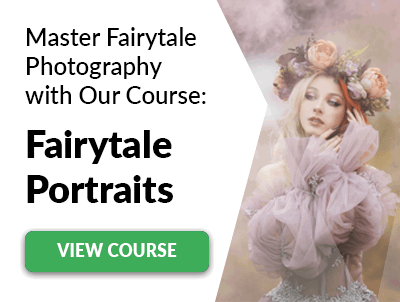
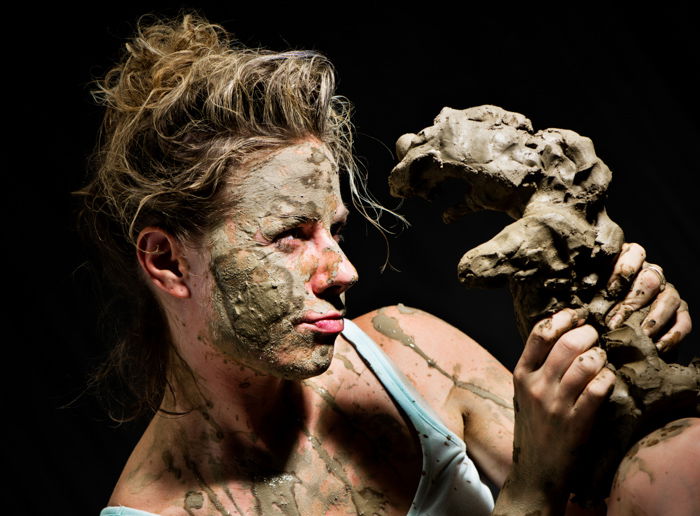

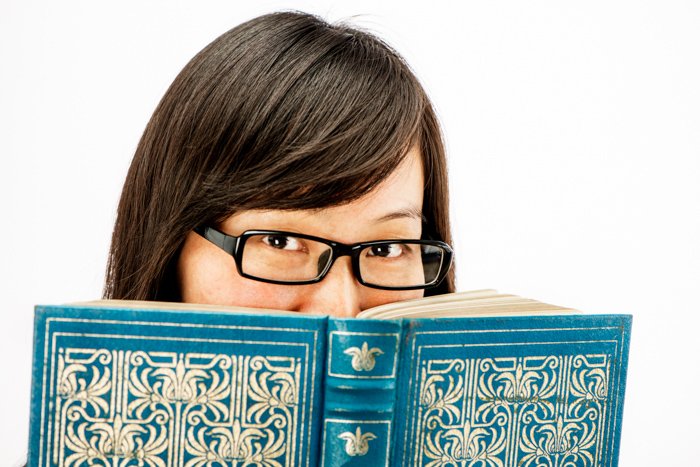
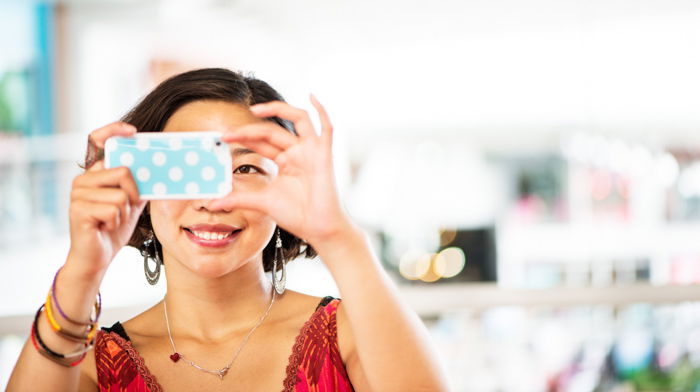

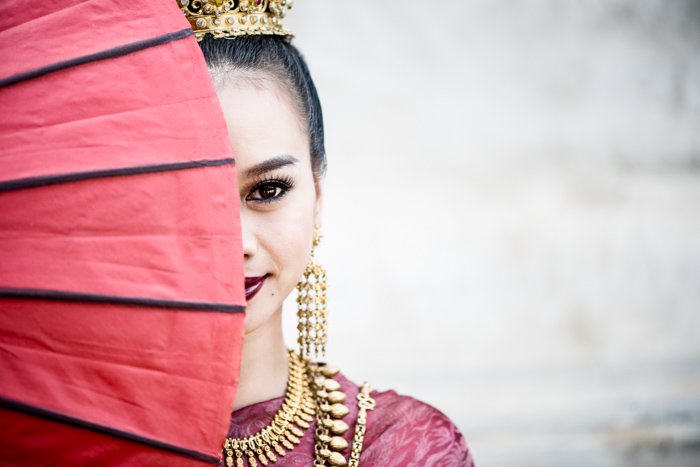
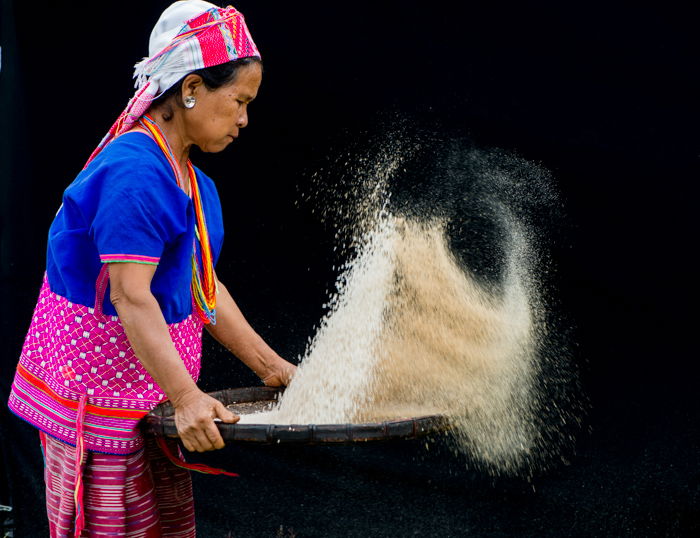
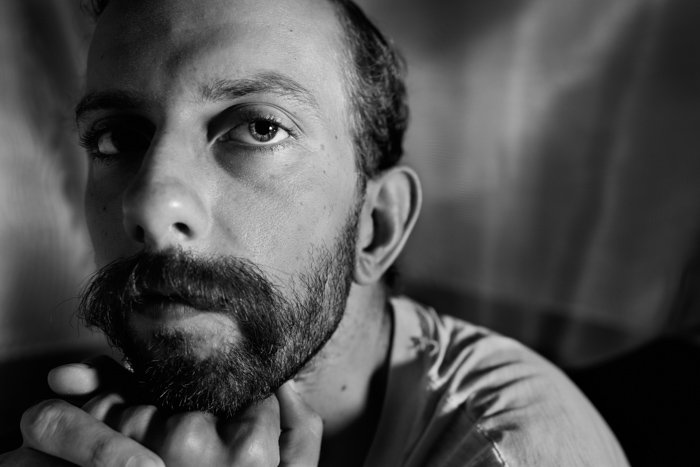
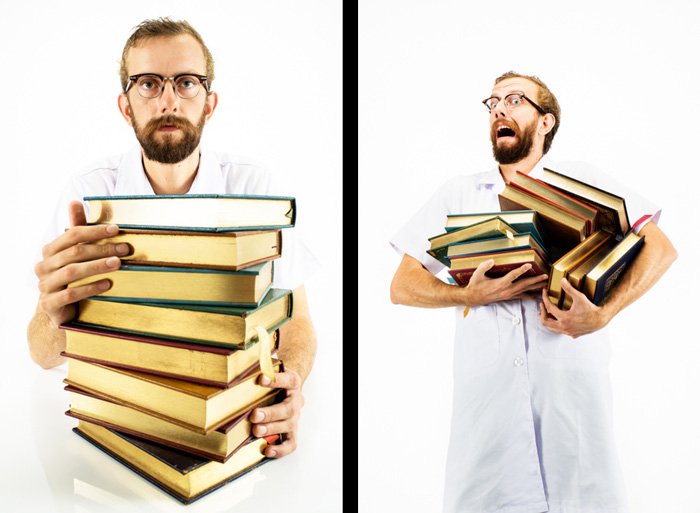

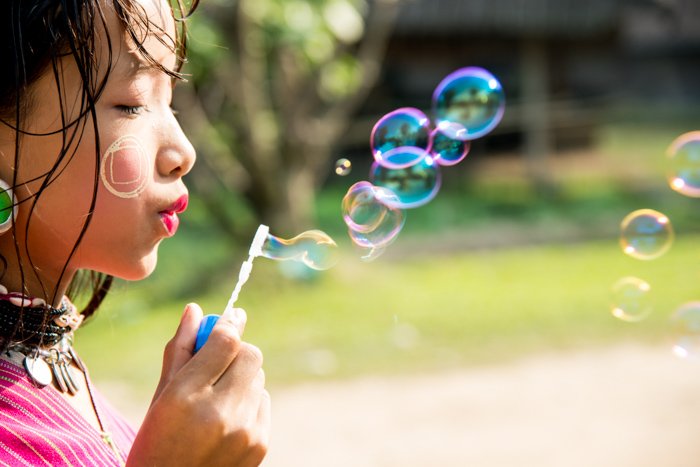
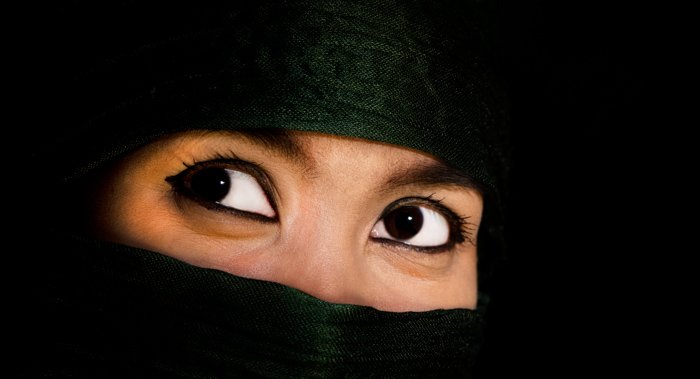
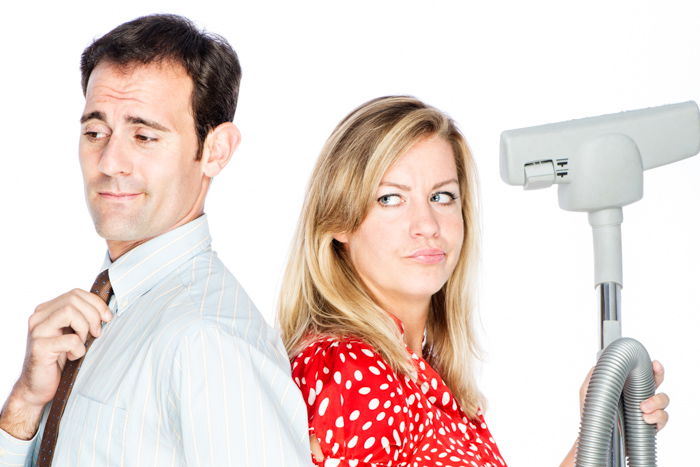
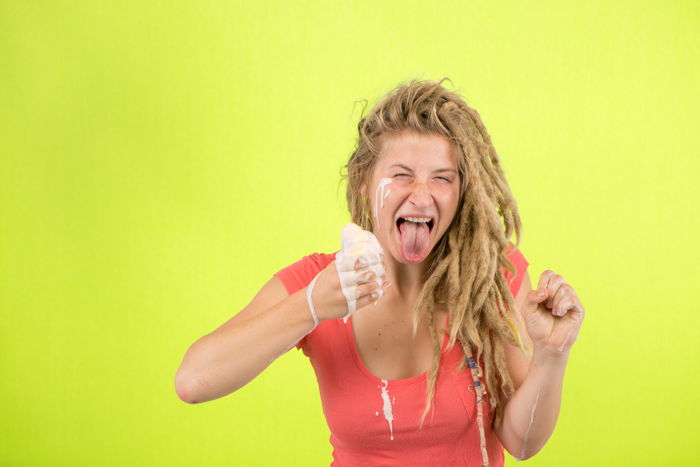

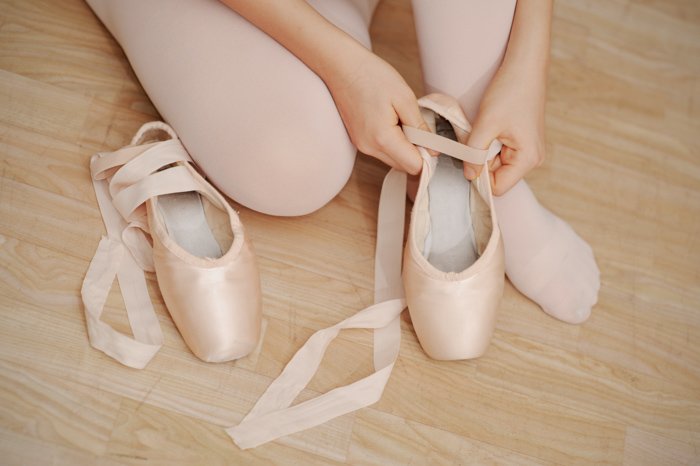
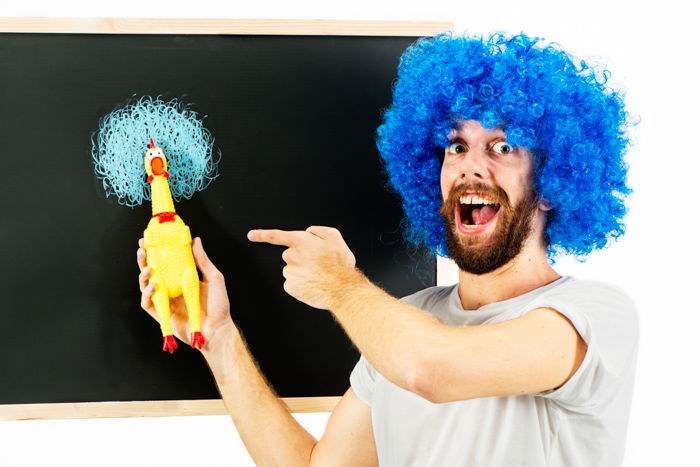
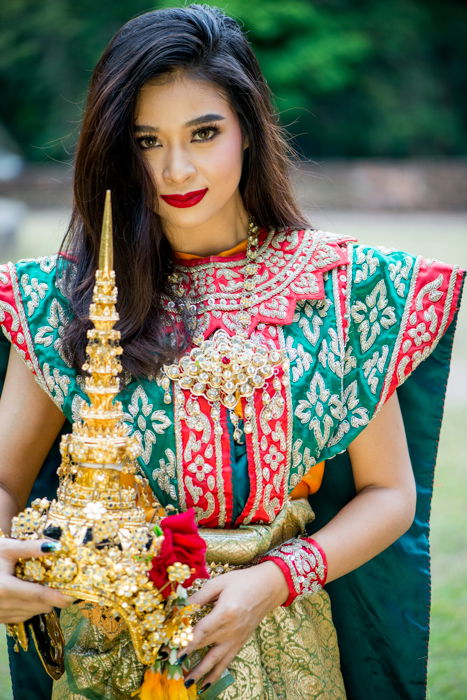
title: “How To Choose And Use Portrait Photography Props” ShowToc: true date: “2023-01-01” author: “Amy Merritt”
Well, used portrait photography props can help you achieve many things: Using photography props well can turn a simple portrait into a compelling story.
What Photography Props Should You Use?
Props are anything at all used to better support and add meaning to the main subject in a photo. With portrait photography a prop will enhance the subject. And it’ll give the viewer a better idea of who they are. Portrait props can add elements of fiction to conceptual photography ideas. This is the case in my portraits of the ceramic artist and her clay.
Ask Your Model to Bring Their Own Props
She had brought along the clay as her idea was to show herself as one with her artwork medium. We started with only a little mud on her face and built it up after every twenty or so photos. I chose dramatic lighting and posed her somewhat the same as I would a fashion model. Ask your subjects ahead of a planned photo session if they have any props they would like to include. Many times you will not have thought about including the props they suggest. The results can be terrific. This is because your subject will be more involved in the portrait concept.
Collect Second Hand Props or Make DIY Ones
Portrait photography studios are usually full of props. They may be homemade DIY props or bought second hand at yard sales or thrift stores. Having a vast selection of props to choose from will give you more scope for creative expression. Keep your props well organised and clean. You want to be able to find them when you have that bright idea to use one. Handing a model a dirty or dusty photo prop is not good. In this photo both the glasses and book were purchased to use as props.
Use Everyday Objects As Props
Whatever you have on hand works. A camera, book, handbag, or a mobile phone. You may be surprised at how effective it is to ask a nervous model to make a phone call. Or to take a photo as you are photographing them. Getting them to concentrate on a prop, whatever it is, will draw their attention away from you.
Finding Props on Location
If you are out and about for your portrait session look around for photography props. At the markets where I love to photograph people there’s plenty of great props. This is one of many photos I made of this young woman with chillies. She had chosen her dress especially for her portraits. Props you find in the environment add spontaneity. But I do find thinking ahead and planning to have some props with you is a good habit.
How to Use Photography Props When Making Portraits
Having a healthy imagination will enable you to come up with the best photo shoot ideas. You can cultivate your ideas by looking at how other photographers use props in their portraits. Study the masters and come up with your own ideas, or try theirs. Experiment a lot. Don’t use a prop the first way you think of or the most natural way. You can start with what’s conventional. This will be more comfortable for your model. Then have your model do different things with the same prop. Think alternatively, even contrarily, and you will come up with some unique portraits.
Use Portrait Props to Add Location Information
Environmental portraiture is often best when you use only one or two props. Props will support the visual story and provide more information about the location. They can also enhance the image by showing more of the person’s character. A particular style of hat. A crafts person’s tools. A stack of books. Anything that is relevant to the person, their location and how you want to portray them. Even when a person is out of context with their environment, a well-used prop will tell their story. I enjoy photographing people in my outdoor daylight studio in mountain villages. They become removed from their environment. Introducing a prop creates a connection to whom and where they are, yet they remain isolated.
Create a Concept by Using Photography Props
Concept photography can be challenging for many. Coming up with good ideas is often a lot more effective and easier when you use props. The props you choose and how your model interacts with them has impact on the concept. Even variations in your model’s expression and posture will alter the story. You can see this in the two photos below. Adding different props can produce completely different concepts. Even when working with the same model, in the same location and with the same lighting. Someone who is very expressive and enjoys being photographed is a huge advantage.
Props Can Provide Occupation Information
Getting your subject to hold a tool or other object they work with conveys information about what they do. A man holding a hammer would be perceived as a carpenter. A woman pictured with test tubes, flasks and holding a beaker of liquid will most likely be a scientist or chemist. Some props are not so informative. Computers, clip boards, or books and other items which are too generic will not be so effective. You want your prop to convey specific information about the person’s occupation. Or at least to hint at it. This woman sells steamed mackerel at the local market. In this location most backgrounds are uninteresting or too distracting. Having her stand in the opening of her workspace with a tray of fish tells a story. Without the fish she would be a happy woman with an awesome smile. Including will hold the viewer’s attention longer and get them thinking. Why is she holding this tray of fish? What does she do? Where is she?
Help Your Subject Relax by Including Props
Portrait photography props can be a considerable aid in getting a nervous or uncomfortable model to loosen up. With children they can provide the best distraction. And allow you to make the most natural, un-posed portraits. Without a prop your subject is likely concentrating on you and your camera. Their thoughts are focused on how they look. Introducing a prop into the portrait session will give them something else to focus on. Simple things like asking them to make a phone call, read aloud from a book or blow some bubbles will transform a static subject. You will need to take more photos to capture the best expression, but is it well worth it. When people are focused on the prop, their facial expression will be more natural. It will not always look the best. If they are speaking on the phone or reading, you will need to choose a frame that is flattering.
Props Can Add Ambience to a Portrait
Creating feeling in a portrait with a person who is a little camera shy is always challenging. Adding the right prop into the mix will help you build feeling. You can do this in many ways, depending on the mood you want to set. Giving a woman flowers to hold will almost always lighten the mood. A cup of coffee can have a similar effect. Even if the prop is unrelated to the person it can help to create ambiance. Encourage your subject to imagine themselves as a character in a movie. Be ready to photograph wherever their imagination leads them.
Working With Props to Add Humour
Creating humourous photos can be very difficult. You can use props to assist with making a photo session more fun. The key thing you need to do to maximize the comedy in a situation is encourage good facial expression. The more your subject puts themselves into the role, the funnier the photo will be. In this photo I used a vacuum cleaner as a prop. I would not have conveyed humour if it were not for the great expressions of my models.
How Props Bring a Unique Dynamic to Portraiture
Working with props definitely adds a diversity to photographing people. When things do not go to plan, be flexible. Use the prop in alternative ways if your initial ideas do not work out. I wanted to create two different styles of photo with the model below. It was her idea to use an ice cream as a prop. My idea was to take some light, happy, summer-themed portraits. Like the ones you might see on ice cream ads. And then some darker portraits. Even though we set the air conditioning as cold as we could, the ice cream melted rapidly. I knew I was not going to get the classic style portraits I had hoped for. So we went with the flow. And this provided a fun series of upbeat portraits. As she changed her clothes and make-up I swapped out the light background for a black background. And I changed the lighting. We also switched to chocolate ice cream. By this time we were resigned to the fact that the ice cream was not going to do anything other than melt. So I used it to create a dark concept of someone addicted to ice cream.
Using Props When Creating a Series of Portraits
A series of portraits of the same person will have extra depth and interest if you use props. It can be difficult to make more than one or two portraits of a person diverse without the inclusion of props. Using props gives you the flexibility to not include the person’s face in every photo. With an appropriate prop it can still be obvious that it’s a photo of your subject. Take this photo of a ballet dancer with her pointe shoes. It’s part of a series of portraits her parents commissioned me to make.
Use Props to Create Extreme Compositions
You want to incorporate your props in a natural or in an exaggerated manner. My photo above of the girl playing with the bubbles is an example prop used to create a natural feeling. This guy with the blue wig and rubber chicken is exaggerating on real life. The biggest mistake you can make is having your props invoke an uneasy atmosphere. Using a prop which does not convey enough meaning or invoke interest can ruin a photo. Placing props in a portrait that don’t belong there will look contrived. Cliches are best avoided too unless you are out to create a specific type of humour. You are better off not using a prop than using one poorly. Either natural or extreme is more effective.
Conclusion
Props are there to support your subject. The way your subject relates to the prop is important as this will influence the feel of the photo. Having a prop sit alongside your subject will sometimes be enough. Often you will be best to encourage some form of relationship between your subject and their props. Giving a person glasses to wear and a book to read will invoke ideas of intelligence. A person with a guitar will be a musician in your mind. Work at developing the right relationship between your subject and their prop. Doing this will lead to much more interesting portraits.




















